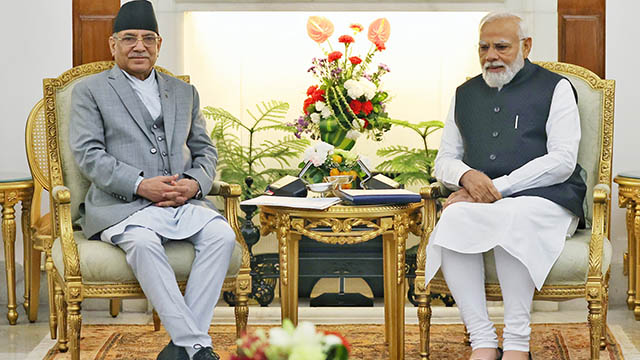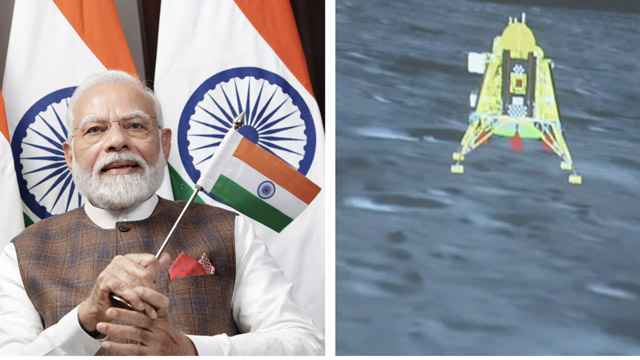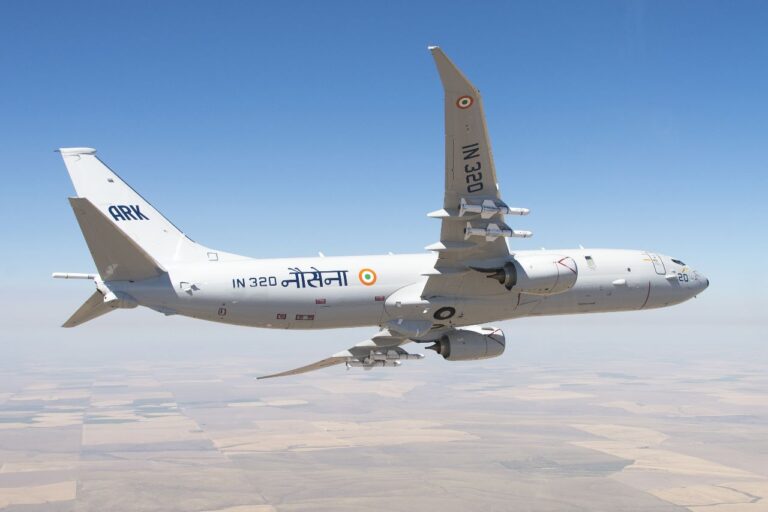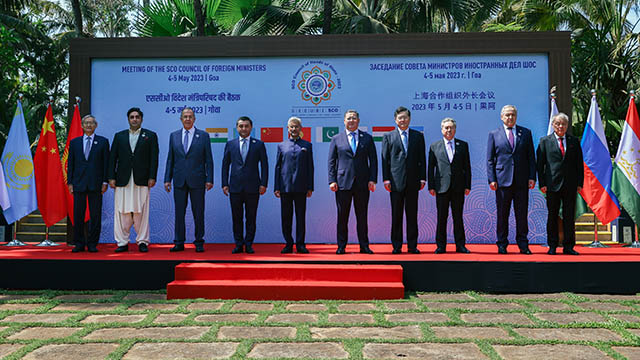Many eyes remained focused on Nepalese Prime Minister Pushpa Kamal Dahal alias Prachanda’s recent visit to India. This visit is crucial for India due to the geopolitical importance of Nepal, which plays a vital role in the rivalry between India and Asian superpower China.
During Prachanda’s recent visit to India, he met his Indian counterpart Narendra Modi and Indian President Draupadi Murmu, reaffirming his government’s stance on developing bilateral relations with New Delhi. This has become a shot in the arm for the Modi government, which has locked horns with China allegedly at the behest of the US.
Although he is considered a pro-China politician, the Communist Party of Nepal (Maoist Centre) [CPN (Maoist Centre)] chairman Prachanda didn’t break the convention followed hitherto by newly-elected Nepalese prime ministers of choosing India as the first destination for official foreign tours.
On Thursday, June 1st, President Murmu asserted that Nepal remains a priority for New Delhi and emphasised that India is committed to the development of the neighbouring country, including the speedy completion of vital projects in that country.
Highlighting that the trade between these two countries was even maintained during the Covid-19 pandemic, the president said that India-Nepal bilateral cooperation has gone from strength to strength in recent years.
President Murmu also emphasised the need of reviving the spiritual tourist circuit to promote people-to-people contact and tourism. Murmu said that “Sister City Agreements” and improvements in financial connectivity can also boost tourism “between our two countries”.
At New Delhi’s Hyderabad House, Modi and Prachanda jointly inaugurated the Kurtha-Bijalpura section of the Jaynagar-Bijalpura-Bardibas rail link built using an Indian grant. Both prime ministers also inaugurated the Indian Railways’ freight rail operations between Bathnaha in India to Nepal Customs Yard. They flagged off the freight train’s maiden run from Bathnaha to Nepal Customs Yard.
The two prime ministers also inaugurated the Integrated Check Posts (ICPs) between Rupaidiha in India and Nepalgunj in Nepal.
Following Prachanda’s discussion with Modi, India informed Nepal that it can sell up to 40MW of power to Bangladesh using the Indian transmission network under a trilateral agreement. India and Nepal both stressed that this move will enhance regional cooperation between these countries.
During Prachanda’s recent visit to India, both countries inked seven pacts covering connectivity, hydroelectric power, petroleum infrastructure, cross-border payment mechanism and construction of integrated check posts at the borders.
The most important among these pacts is the one under which India can import up to 10,000MW of power from Nepal in the next ten years. During his meeting with Prachanda, Modi also highlighted the importance of Nepal for New Delhi and said that his government will strive to take the bilateral relationship to “Himalayan heights”.
Modi said during his first visit to Nepal within three months of taking over as the prime minister in 2014, he gave the “HIT formula” for India-Nepal bilateral relationships, which stands for “highways, i-ways and trans-ways”. Modi said that he had committed that his government will “build such relations between India and Nepal that our borders don’t become barriers between us”.
Prachanda said that his government is impressed by India’s development and economic transformation under Modi’s leadership. He congratulated Modi on completing nine years of governance this week.
“The relations between Nepal and India are age-old and multi-faceted. This relation stands on a solid foundation built on the one hand by the rich tradition of civilisational, cultural, (and) socio-economic linkage, and, on the other, by the two countries’ firm commitment to the time-tested principle of sovereign equality, mutual respect, understanding and cooperation”, Prachanda said during the joint press briefing.
Prachanda said that huge business opportunities are available in Nepal for Indian investors and sought investment from India in sectors like mining, manufacturing, agriculture, energy, tourism, infrastructure, technology and hospitality.
“No countries other than Nepal and India share such an intimate friendship and deep-rooted cultural affinity providing an excitingly favourite business environment. Moreover, the two governments are moving ahead with bold decisions to transform the development landscape. This needs to be echoed by the private sector, which is a powerful engine of growth”, Prachanda said at the India-Nepal Business Summit organised by the Confederation of Indian Industries (CII) in New Delhi on Thursday.
At the CII’s event, Prachanda invited investors by highlighting the availability of abundant natural resources, skilled labour, a promising and growing market, and a set of market-friendly policies and regulatory frameworks. He said these make Nepal an attractive destination for investors.
With India becoming a crucial US ally in the “Indo-Pacific”, it has become a necessity for New Delhi to ensure Nepal remains under its sphere of influence and doesn’t lean towards China. India’s advantage in its bilateral relations with Nepal vis-à-vis China is that it’s the only country through which the land-locked Himalayan country gets its crucial supplies. Nepal is also dependent on Indian ports for foreign trade.
Even though China has been trying to play a pivotal role in the geopolitics of the subcontinent, the existence of the Himalayas, which prevent a speedy connection with Nepal has rendered it weak. Even the hardcore “anti-India” factions of Nepal’s major communist parties like the CPN (UML), CPN (Maoist Centre), etc, have realised that they can’t irk New Delhi until they have an alternative infrastructure to sustain their economy.
Prachanda’s recent visit to India emphasised harnessing this relationship with India, irrespective of the Nepali left’s rhetoric against New Delhi’s alleged “expansionism”. However, whether India-Nepal bilateral relations can move beyond New Delhi’s apprehensions regarding Beijing, and whether both parties can use the relationship to develop infrastructure and eradicate poverty can only be seen in the future.







